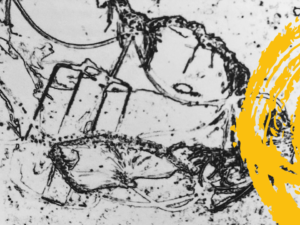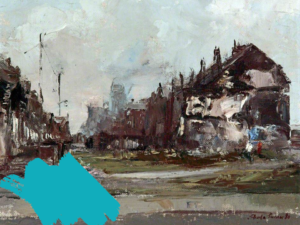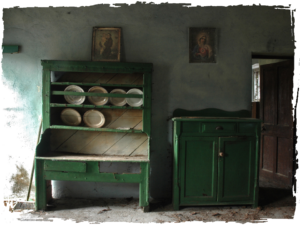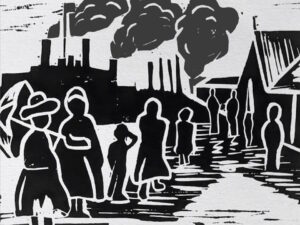
Ged Melia is a local author and historian. He’s keen to use his family history as a stepping stone for others to reach in to the past. Constantly inspired by the cheek-by-jowl existence of class and opportunity, Ged’s work is beginning to give voice to those who have been missed from history or whose stories have been erased due to a ‘lack of status’. His newest book, Liverpool, crosses the time of the Irish Famine (1845-52), 175-years ago.
Article contents
- Liverpool: a story for everyone
- Contrasts
- Rarity and class
- Liverpool’s beginning
- Straddling generations
- Read.
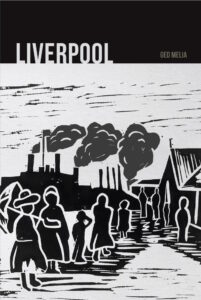 Liverpool, as its title suggests, is a book about the city and its people.
Liverpool, as its title suggests, is a book about the city and its people.
Not the city that you know today, but the city of the 1840s; a city experiencing incredibly fast change, socially, politically, culturally, religiously and certainly economically. It was a city absorbing tens of thousands of Irish ‘immigrants’, or more accurately, ‘migrants’.
As anyone with a rudimentary understanding of Irish history knows, Ireland was at the time still part of the United Kingdom. My own family’s story was part of that bigger story of the city. The more I learned about the privations of living -or surviving- in mid-century Liverpool, the more encouraged I was to try and tell it.
Contrasts
Liverpool in the 1840s was a city of sharp contrasts. The elite, the middle class, the gentry, the rich; theirs was an attenuated layer of wealth that poverty could never touch. They lived in one world, while the rest lived in another. The people, increasingly of Irish origin, lived most of their lives at the base of Maslow’s pyramid, addressing only their ‘physiological’ need. Whatever they earned merely served to put food on the table and pay the rent on accommodation that hardly warranted the description ‘shelter’. Their world was one of uncertain employment, religious prejudice, criminality, early death and disease… And luck played its part. Good luck was hard to come by, but bad luck came all too easily.
Video below (c) Ged Melia, 2023.
Rarity and class
Most of the material written about the Liverpool of that period tends to be technical or educational in approach. There are a few anecdotes here and there, perhaps a short story or two, but there are few novels. And there are fewer, if any, novels written that place the working class at the centre of the story. Novels written in the nineteenth century were generally written by the middle class, for the middle class.
The workers, no doubt, were deemed to be too uninteresting to play anything other than a servile part; a servant perhaps, a labourer, a footman, perhaps even a farmer. I can’t think of anything written that places an illiterate docker or stonemason’s labourer at the centre of a drama. Even in this century, dramatic presentation of the impoverished of past centuries is often layered with a coating of sugar. Liverpool is an attempt to address that imbalance.
Liverpool’s beginning
The book’s first chapter finds our family living in Mayo on the west coast of Ireland. Life is hard, but perhaps just about bearable. They could live with the uncertainty of crop yields, and reluctantly bear the demands of the rent collector, but a growing threat of eviction forces a decision. Tales of a better life in America had woven their erratic way through a hundred repetitions to their remote settlement on the coast. So, that is where they would go. The chapter relates the story of the journey from Connacht to Dublin and Dublin to Liverpool. After that? Well, you would need to read on to discover what happens soon after their Clarence Dock arrival.
The story is anchored on real people and real events. As a local historian, I tend to enjoy researching the period I am writing about. I like to be able to not just tell the story, but walk the streets, see and describe the buildings. Criminality, religious strife and political tensions are interlaced within the family story.
At that time, Chartism -while less prominent in Liverpool- has spread across Lancashire. The Orangemen are still on the prowl, though threatened by a growing Irish Catholic contingent. Even Transatlantic slavery features. Perhaps most of all An Gorta Mór (The Great Hunger), a blight which lasted for several years, formed an unwelcome backdrop to the life of almost everyone in the city. It made an already difficult situation even worse.
More people -on reducing incomes- squeezed into the dark, damp, disease infested streets of Vauxhall, which meant more cholera, typhus and typhoid. Many died and yet some survived. Perhaps that is where the elusive ‘good luck’ could be found; one of the few instances.
The third book
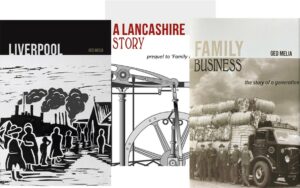 Liverpool is my third novel. Each one has been inspired by people and events in my own family’s history. With the exception of a few names and dates the narrative is entirely a work of fiction, but might be closer to the truth than I care to admit. I also like to think that it could be the story of any Irish family who lived in Liverpool in the Irish Famine years. Change a few names and dates and it could be your family’s tale.
Liverpool is my third novel. Each one has been inspired by people and events in my own family’s history. With the exception of a few names and dates the narrative is entirely a work of fiction, but might be closer to the truth than I care to admit. I also like to think that it could be the story of any Irish family who lived in Liverpool in the Irish Famine years. Change a few names and dates and it could be your family’s tale.
Book two
The two earlier novels are set in earlier periods. A Lancashire Story is based around family events between 1890 and 1920. It’s the tale of how the son of an illiterate coal miner became educated, eventually becoming ‘Chief Tenter’ (Chief Steam Engineer) for two textile mills in Bolton. It begins to map out a younger version of the characters in Family Business, my first novel.
Book one
There are several stories within this book. It’s the chronicle of the birth, life and death of a family road haulage business; the story of the family generation living between 1920 and 1950 and the account of ‘Great Uncle Ted’. Edward, or Ted, was one of those likeable philandering villains that many families seem to produce. His story is one of multiple women; at least one illegitimate child and a life journey that culminated in a three-year sentence in Wakefield Prison.
Straddling generations
I have an ancestor who (almost certainly) died in the Brownlow Hill Workhouse; a daughter who is a scientist working at Oxford University and a son working at the cutting edge of web technology. Within the three novels, I’ve tried to fill in some of the story in between these two sharply contrasting situations. Even now there is still much I could probably tell; a lot has happened in the last 180 years. When I look back over the last couple of centuries, a single phrase pops into my head: ‘My God it’s been a ride’.
Read
 Liverpool is a challenging read, brutal even, in its presentation of the times. Nonetheless, I still hope and believe you will find it worthy of your time, once you have finished it.
Liverpool is a challenging read, brutal even, in its presentation of the times. Nonetheless, I still hope and believe you will find it worthy of your time, once you have finished it.
If you would like to see some background material about all of my novels, please check out the website: dmscollectables.co.uk/novels
For more background reading on the impact of the Famine in Liverpool, the Festival’s own website page, ‘Irish Famine Trail Map’, is an easily digestible place to start: liverpoolirishfestival.com/liverpool-irish-famine-trail-map
Ged’s book is available to buy on Amazon.
Associated events (please note, these may have passed)
Related writing

